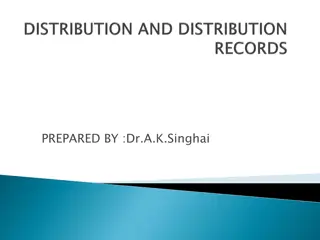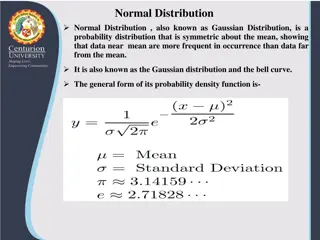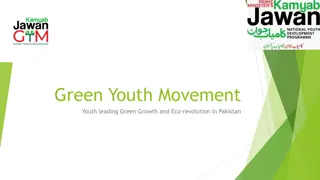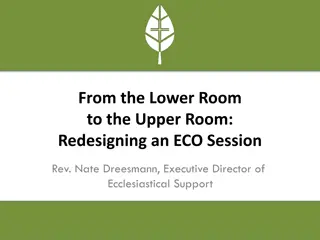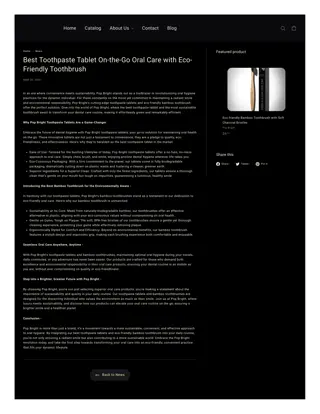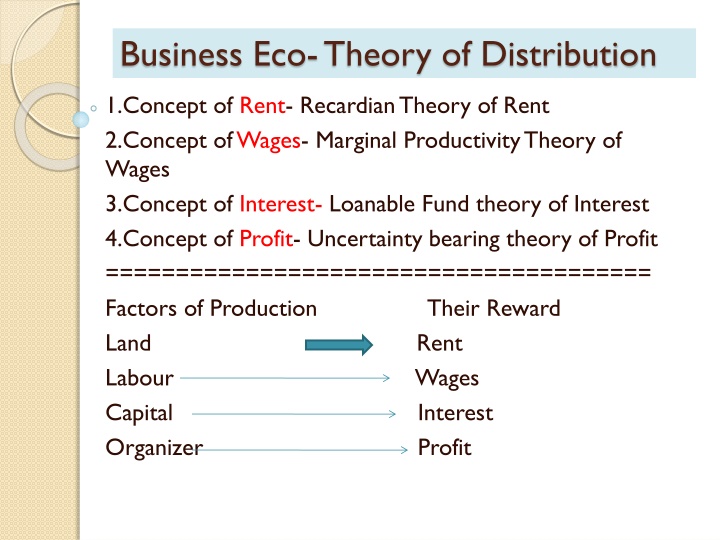
Eco-Theory of Distribution: Rent and Recardian Theory
Explore the concepts of rent, wages, interest, and profit in the economic theory of distribution. Learn about the Recardian Theory of Rent, its assumptions, and criticisms. Understand how factors of production are rewarded as land, labor, capital, and organization contribute to the economy.
Download Presentation

Please find below an Image/Link to download the presentation.
The content on the website is provided AS IS for your information and personal use only. It may not be sold, licensed, or shared on other websites without obtaining consent from the author. If you encounter any issues during the download, it is possible that the publisher has removed the file from their server.
You are allowed to download the files provided on this website for personal or commercial use, subject to the condition that they are used lawfully. All files are the property of their respective owners.
The content on the website is provided AS IS for your information and personal use only. It may not be sold, licensed, or shared on other websites without obtaining consent from the author.
E N D
Presentation Transcript
Business Eco-Theory of Distribution 1.Concept of Rent- Recardian Theory of Rent 2.Concept of Wages- Marginal Productivity Theory of Wages 3.Concept of Interest- Loanable Fund theory of Interest 4.Concept of Profit- Uncertainty bearing theory of Profit ======================================= Factors of Production Their Reward Land Rent Labour Capital Organizer Wages Interest Profit
Concept of Rent Rent is the price per unit of time for the service of durable goods. Like cycle, automobile, house etc. Ex- Rs.10 / per hour for cycle or Rs.10000/ per month for flat It is known as contractual rent In modern view rent is a payment to any factor of production over and above its transfer earning. Dr.Sachin M.Prayag
Recardian Theory of Rent Recardo define rent as, That portion of produce of the earth which is paid to the landlord for the use of original and indestructible power of the soil. Tenant Farmer B Landlord A Gave 50 kg wheat to Landlord as Rent Produced 150 kg Wheat Net Produced for farmer B is 100 kg. Dr.Sachin M.Prayag
Assumptions of Recardian Theory of Rent 1.Land has no other use than farming 2. Rent depend upon the fertility of land 3.All landlord give their land to tenant farmer means no landlord is farmer and no farmer has his own land. 4. Land differs in fertility 5.Land possess certain original and indestructible power 6.Order of cultivation i.e. most fertile land cultivated first, then less fertile and at last least fertile land is used for cultivation. 7. There is no rent land which is infertile and never used for farming . Therefore such marginal or no rent land is existed and can not earn any Rent. Dr.Sachin M.Prayag
Recardian Theory of Rent Grade of Land Land A 2 Acres Land B 2 Acres Land C 2 Acres Cost of Cultivation Production of Wheat 30 Quintals Value of Output (Rs.1000 per Quintal) Rs.30000 (30 x 1000) Rs.25000 (25x 1000) Rs.20000 (20x 1000) Rent Rs.20000 Rs. 10000 30000-20000 Rs.5000 25000-20000 Rs. Nil 20000-20000 Rs.20000 25 Quintals Rs.20000 20 Quintals 35000 30000 30000 25000 25000 20000 20000 20000 20000 20000 15000 10000 10000 5000 5000 0 0 Most Fertile Less Fertile Least fertile Production Cost of Cultivation Rent Dr.Sachin M.Prayag
Criticism of Recardian theory of Rent 1. Land has original and indestructible power- is not a correct statement. Because fertility of land can be improved by using fertilizers and fertility get reduced due to wrong cropping pattern 2. Order of cultivation has no historical evidence. (High fertile land get cultivated first and least fertile land used at last) 3. No rent land does not exists. Even barren land can earn some rent. 4.Multiple factors determine fertility. I.e. Agriculture practice, cropping pattern, availability of water ,etc. 5. The aspect of scarcity of land is ignored. 6. Rent element is found in all factors of production. Dr.Sachin M.Prayag
Concept of Wages The term wages means payment made to the labours for their service. An employer paid wages to the labour because they contribute in production process. T. R. Turner defines, Wages is the price paid by the employer to the worker on account of labour performed. Dr.Sachin M.Prayag
Marginal Productivity Theory of Wages According to this theory in the long run wages of the labour should be equal to his marginal productivity. As the labours are productive they are demanded by employer or producers. Therefore the wage rate get fixed at the point where demand and supply of labour intersect each other . But an employer should consider his/ her productivity while fixing wage rate. Dr.Sachin M.Prayag
Criticism of the theory 1.Give more importance to demand side and ignored supply side of the labour. 2. Assumption of perfect competition is wrong. 3. Assumption of full employment is baseless. 4. Theory ignores wage fixation in short period. 5. It is difficult to measure the productivity of single labour working in large production units. Dr.Sachin M.Prayag
Interest -Concept Interest is a premium which is paid on capital that is borrowed. Benham Interest is the price paid for loan Excess amount which a creditor gets is called gross interest. Dr.Sachin M.Prayag
Concept Gross Interest = Net Interest+ Insurance against risk+ Wages fro Management+ Reward for inconvenience Net Interest= Price for Loan Insurance against risk=1.Personal risk 2.Business risk Management Exp.= Staff salary + Books of A/c +System exp. Reward for inconvenience= Waited for long period for own money Dr.Sachin M.Prayag
Loanable Fund Theory ( Neo-Classical Theory ) Interest rate is fixed as per demand for and supply of loanble funds Total Deposit 40,00,000 Reserve 12,00,000 Loanable Fund 28,00,00 Dr.Sachin M.Prayag
Demand for Loan:- 1.Investment Demand-Loan for business, industry etc. 2.Consumption Demand-to purchase TV, Car, Air conditioner etc. 3. Hording:-Keep cash in low interest Demand for Loan=Investment + Consumption + Hording Dr.Sachin M.Prayag
Supply for loan:- 1.Savings-A.planned B. Unplanned 2.Dishording-Increase supply and avail loan able fund (High Interest= More supply) 3.Bank Credit-Bank credits supplies loan in market 4.Disinvestment- Creditors supplies more loan avoiding own purchases Supply= S+DH+BC+DI Dr.Sachin M.Prayag
Critism of loanable fund theory Just an extension of classical theory Excessive importance to savings Investment is depend upon marginal efficiency than saving Interest rate is fixed by monitory authority of country (RBI) Wrong assumptions of full employment Ignore Income Level Dr.Sachin M.Prayag
Profit:-Nature Profit is a return to entrepreneur. He perform two important functions 1.Combine and organize factors for production 2.Face risks and uncertainties in business Dr.Sachin M.Prayag
Gross & Net Profit Gross Profit= Total Revenue Explicit cost (Explicit Cost=Rent-1,00,000+Wages- 1,50,000+Interest-1,00,000/-) Total Sale/Revenue 5,00,000/- 3,50,000/- 1,50,000/- Explicit Cost Gross Profit Dr.Sachin M.Prayag
Gross & Net Profit Net Profit= Total Revenue-(Total Explicit cost+ Total Implicit cost) Net Profit =Gross Profit total implicit cost (implicit cost=Wages of owner, interest on own capital contribution) Gross Profit- 1,50,000/- Implicit Cost (Wages of owner-20,000/- Interest on Owner s capital 20,000/-) Net Profit= Gross Profit 1,50,000- 40,000 = 1,10,000/- 40,000/- Dr.Sachin M.Prayag
Uncertainty Bearing Theory- Prof. F.H.Knight Knight stated that entrepreneur earns profit which is a reward non insurable risk and uncertainties. Fire, theft, flood death are insurable risk and can be covered by insurance company Theory stated that Profit is due to non insurable or unforeseen risks. Dr.Sachin M.Prayag
Unforeseen risks 1.Competetive risk 2.Techinical risk 3.Change in govt. policies 4.Cyclical risk 5.Risk of change in Demands There is direct relation in risk bearing and profit ( Higher the risk more the profit) Dr.Sachin M.Prayag
Critism of Uncertainty bearing theory 1.Ignore other factor-Factors like coordination, innovation, Efficient performance etc also generate Profit. 2.Uncertainy can t surely earns profit 3.Does not explain monopoly profit 4.Profit where ownership(Shareholders) is different than control(Management) is not discuss. 5.Uncertinty is a part of every business activity it can not be avoided Dr.Sachin M.Prayag
Innovation theory of Profit-Joseph Schumpeter The theory stats that Innovation is a distinctive function of an entrepreneur for which he gets profit Innovation is a policy to improve production, demand or reduce cost. Innovations means * Technological advancement * Improved production method * Efficient Marketing activity Dr.Sachin M.Prayag
Innovation :- Schumpeter stated following five types of innovations- 1.Introduction of New Goods 2.New Production Method 3.Opening of New Market 4.New source of raw material 5.New organizations in market Dr.Sachin M.Prayag
Types of Innovations Innovation to reduce cost of Production New machines, cheaper cost of production, new source of raw material etc. Innovation to increase demand or utility- New design, attractive marketing, new market for product etc. Schumpeter states that entrepreneur who innovates can earn abnormal profit for short period Profit earn by innovation is not permnent. Dr.Sachin M.Prayag
Critism of innovation theory of profit:- 1.Copy of Knight Uncertainty theory Uncertainty= innovation 2.Ignore Other functions Efficiency ,accuracy in work etc. 3.Role of risk bearing is not discuss 4.Ignores importance of uncertainty 5.Incomplete- other factors like market conditions, govt.policy are not discuss 6.Narrow view :-Profit also earn due to goodwill, company image, role of other competitors etc. Dr.Sachin M.Prayag
Drop your suggestions at - sachinprayag1@gmail.com Contact- 9881717278 OR Dr. Sachin M. Prayag. Assistant Professor. Department of Commerce, Govindlal Kanhaiyalal Joshi (Night) Commerce College, Latur. Thank You !!! Dr.Sachin M.Prayag








